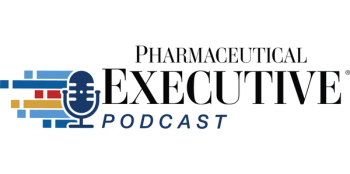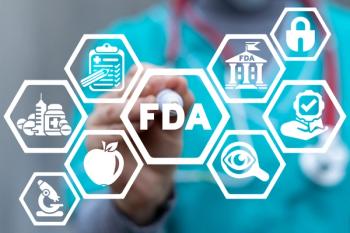
All in on AI is Not the Solution in Life Sciences and Health Care
Although life science organizations are not immune to the benefits of artificial intelligence, it’s important to integrate it with caution because there is no “one-size fits all” approach.
From enhancing productivity to transforming customer service, the expansion of artificial intelligence (AI) into various industries has been nothing short of revolutionary. As reported by
However, although life science organizations are not immune to the benefits of AI, it’s important to integrate it with caution because there is no “one-size fits all” approach when it comes to the communication and translation of complex health information and scientific jargon.
Unfortunately,
For example, a recent study from
AI Inherits Bias from Human Programmers
AI is thought of as neutral because it’s not human, yet that is not the case. Many AI models are trained on huge amounts of public data that contain stereotypes, biases, and prejudices. If the data is a few years old, it may not reflect recent societal efforts to be more inclusive. Problems could include:
- Sampling Bias: Some groups might be overrepresented or underrepresented.
- Labeling Bias: When humans labeling the data perpetuate their own bias when performing the task of labeling or classifying data.
- Algorithmic Discrimination: Bias is embedded in the optimization processes applied during training, meaning the software itself is biased.
- Contextual Bias: A lack of understanding of the broader social and cultural contexts or nuances.
- Cyclical Bias(or self-reinforcing bias): This happens when an AI system is used in a real-world setting and its decision impacts other data collections.
- Gender Bias:
MIT researchers reviewed gender bias in machine learning and found AI can suffer from gender biases that can do harm to society. For example, words like “anxious” and “depressed” have been identified as feminine. Translating gender-neutral language can also be problematic, as AI often has to guess genders. This can result in stereotyping male roles like ‘doctor’ to be translated as male, and professions like ‘nurse’ to be associated with females. - Racial Bias: Many biased algorithms require racial or ethnic minorities to be more ill to receive the same diagnosis, treatment, or resources as their white patients. In response, an
expert panel convened by the Agency for Healthcare Research and Quality and the National Institute on Minority Health and Health Disparities recently proposed guidelines to mitigate bias in healthcare AI.
AI Under the Regulatory Umbrella
Regulatory agencies increasingly recognize the potential benefits of AI in improving health outcomes, which is why life science companies need to stay on top of guidance. The Department of Health and Human Services (HHS) has been at the forefront of most AI regulatory activities, but other government agencies, such as the
According to a recent article from the law firm
- Drug discovery and development
- Precision medicine and personalized treatments
- Medical imaging and diagnostics
- Disease prediction and prevention
- Clinical trials and research
Given that nearly 1 in 5 Americans
What is the fix? Human oversight
AI isn't going away, which is why it is vital to customize constantly evolving AI applications and innovations to create tailored, effective technologies that reflect life science organizations' regulatory and organizational framework. This is essential to promote health literacy and health equity as accurate, culturally appropriate materials help patients make informed decisions about their healthcare (and insurance) in partnership with a provider. For example, AI is useful to integrate into automated processes to improve efficiency on repetitive tasks, but retaining the human touch—actual translators—is essential to produce culturally sensitive and accurate translated materials.
There are four key areas that businesses can focus on to reduce AI bias:
1. Human Expertise: Trained linguists play a vital role in post-editing AI translations to ensure accuracy and cultural sensitivity. They can also identify and fix biases in the data, retrain data sets with revised translations, and
2. Automated Quality Checks: These checks can include linguistic analysis tools that compare AI translations to human translations, as well as algorithms that detect patterns of bias in the data. By
3. Custom-Designed Tools: By customizing AI tools that incorporate industry-specific terminology and cultural nuances, businesses can reduce bias in AI while improving delivery of accurate communication.Training LLM datasets with these elements (or prompting a GenAI review tool to take them into consideration) allows you to be more efficient without sacrificing your intended message.
4. Risk Management Policies: Following the Guidance on the Application of ISO 14971 to Artificial Intelligence and Machine Learning or the Actions to Address Risks and Opportunities elements of ISO 42001, organizations can implement effective AI strategies while taking into consideration the risks of bias.
“Artificial Intelligence (Al) can bring benefits to healthcare - improved clinical outcomes, improved efficiencies, and improvement in the management of healthcare itself. However, the implementation of new technologies such as Al can also present risks that could jeopardize patient health and safety, increase inequalities and inefficiencies, undermine trust in healthcare, and adversely impact the management of healthcare." - Guidance on the Application of ISO 14971 to Artificial Intelligence and Machine Learning
While AI does hold promise in changing healthcare, it’s critical to approach its implementation thoughtfully and strategically. By combining the efficiency of AI with human oversight, businesses can realize the full potential of AI in improving healthcare outcomes and promoting health equity.
About the Author
Dan Milczarski, Executive Vice President of Process and Technology,
Newsletter
Lead with insight with the Pharmaceutical Executive newsletter, featuring strategic analysis, leadership trends, and market intelligence for biopharma decision-makers.





